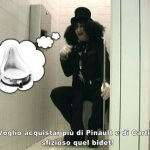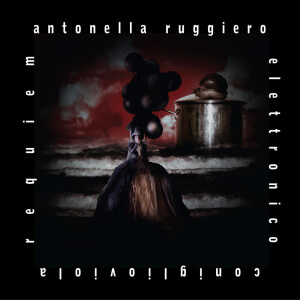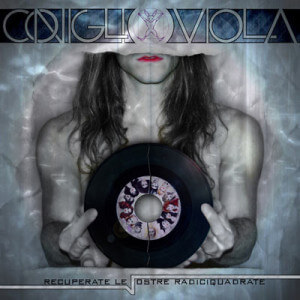Ecce Trans (and the censorship)
On July 2007 ConiglioViola was the protagonist of the discussed group exhibition in Milan Vade Retro. Art and Homosexuality. ConiglioViola presented there a small photograph: a digital manipulation of a gossip picture that portrayed an Italian politician , driving his car, who approaches a transsexual male prostitute. The original picture had been sold by a paparazzo to Italian gossip magazines for the impressive price of €100.000
In Ecce Trans – title of ConiglioViola’s work – the image of the transsexual is substituted by the image of Christ – according to Matthew’s Gospel that says that in every emarginated person it’s possible to see an imago Christi. On the photograph frame , the price is stuck, to underline that the artist can make even a greater scoop than a paparazzo, since its camera can see over appearance. Unfortunately the work was never been exposed because it was censored on the same day of the exhibition opening. The scandal that was created and the polemic division that it caused among certain Catholic Church officials in its interpretation finally led to the closing of the exhibition itself.

ConiglioViola, Ecce Trans, 2007. cm 40×30
Martina: but you risked in another way, when one of your works was at the centre of a national scandal, and even caused an exhibition to be cancelled… Ecce Trans caused a massive scandal, everyone was talking about it, it started arguments, people taking stances, furious comments, TV reports. You messed up big time. I’m really not into provocation for its own sake – contemporary art is chock-full of it nowadays, and I see that as a symptom of its weakness, its crisis point, its emptiness. So can you explain what it was you set out to do?
Brice: Pasolini said that when the work of an artist is honest it always creates scandal because the artist’s vision bursts in on the lives of people. You see, when I was invited to take part in that exhibition, (which incidentally was not a great exhibition, or a necessary one) I got to thinking that I was one of the few living artists in the show and that it was therefore my duty so say something about the present. I don’t care for gratuitous provocation either! Provocation is only worthy of the name when it reveals truths, otherwise it is just vulgar, offensive, facile and useless, there is so much of it around these days, it just ends up being about getting publicity!
That time, however there was an emergency that had to be addressed, and I had the opportunity to do it. In that year (2007) the issue of homosexuality was a thorny political issue in Italy, and to talk about sexuality I wanted to focus in particular on transsexuals, who in my view are the only figures that effectively are not integrated, that are outsiders in our world. There was that ridiculous case, a simple photo in which Sircana, possibly quite by chance, was driving past a transsexual, and it caused such a scandal… The paparazzo who took the photo had sold it to an important publisher who however did not publish it… I got the photo off the internet and manipulated it in a fairly simple way to replace the figure of the transsexual with that of Christ, taking inspiration from a passage of the gospel according to Matthew, which was also, not incidentally, a favourite of Pasolini’s. In that passage Jesus, who in the first place was a great provocateur, a rebel, says that we can see him in every person “on the margins”. So the image of the transsexual in question, that caused such a furore, became a perfect Imago Christi.
But there was another level to it. I decided to put a price tag on the photo, €100,000, which was what the original paparazzo was paid for it. This was to highlight the stupidity of contemporary journalism, that feeds off easy scoops to distract our attention, and a way of underlining how an artist can create an even more scandalous revelation (on sale at the same price as the original, and with the price there for all to see!), because the artist’s camera, even when it is directed towards reality, captures details that escape the common eye. In the end the furore that Ecce Trans created showed that I hit the spot… but the scandal was not in the work itself, which was orthodox and faithful to the Gospel, but in the judgement of those who condemned it from behind a shield of facile, hypocritical moralismfrom “Interview with Mr. Rabbit ” by Martina Corgnati
In “Sono un pirata / Sono un signore” ed. Silvana 2009

 Previous Post
Previous Post Next Post
Next Post


